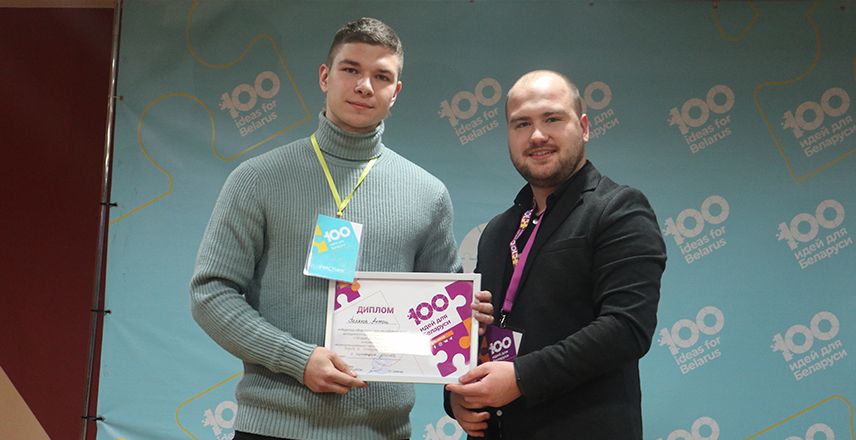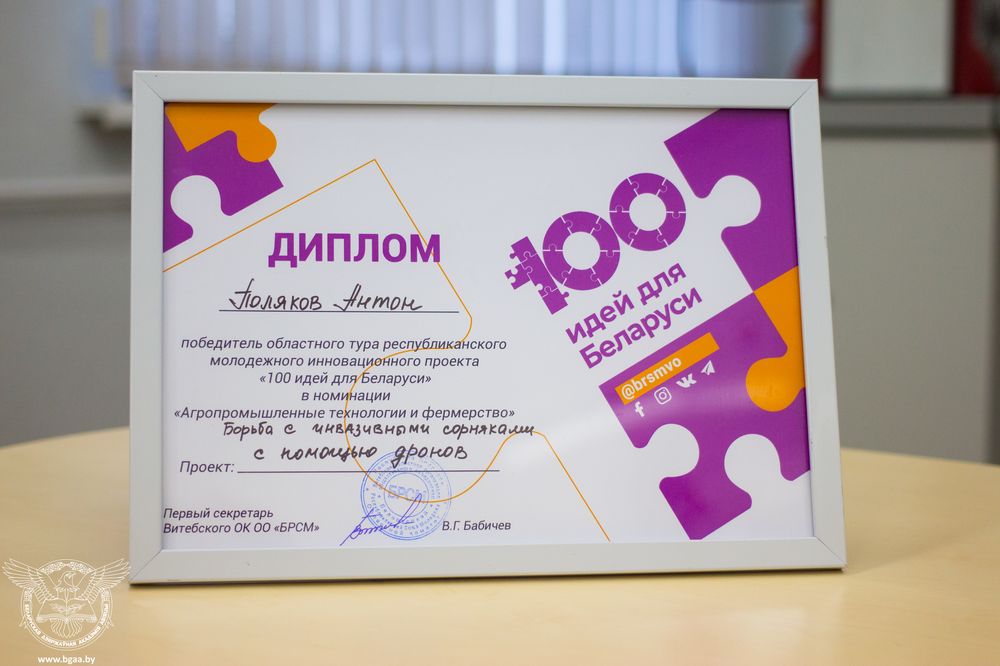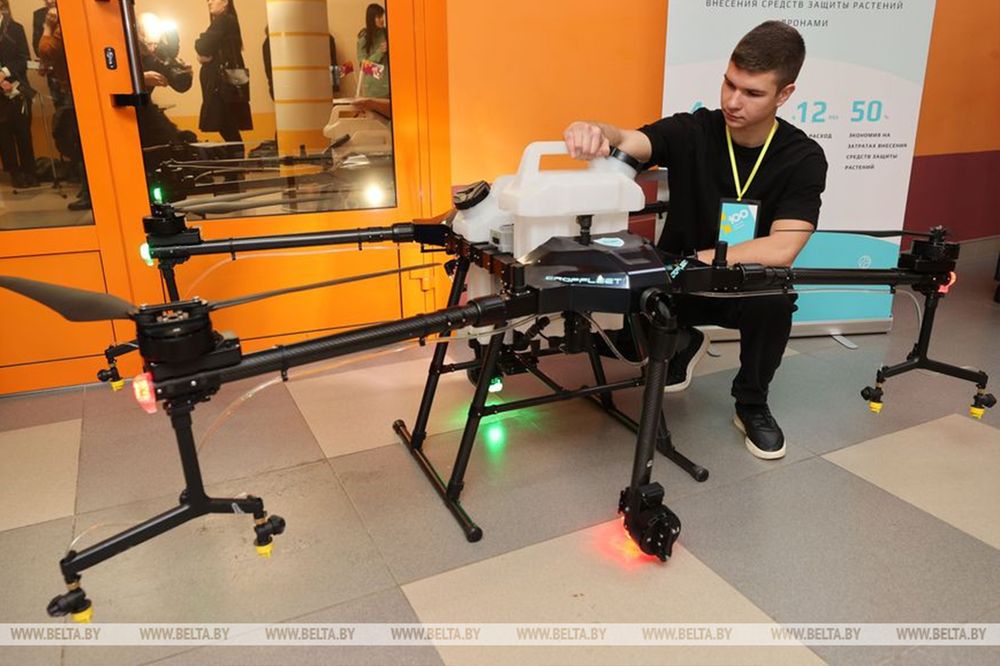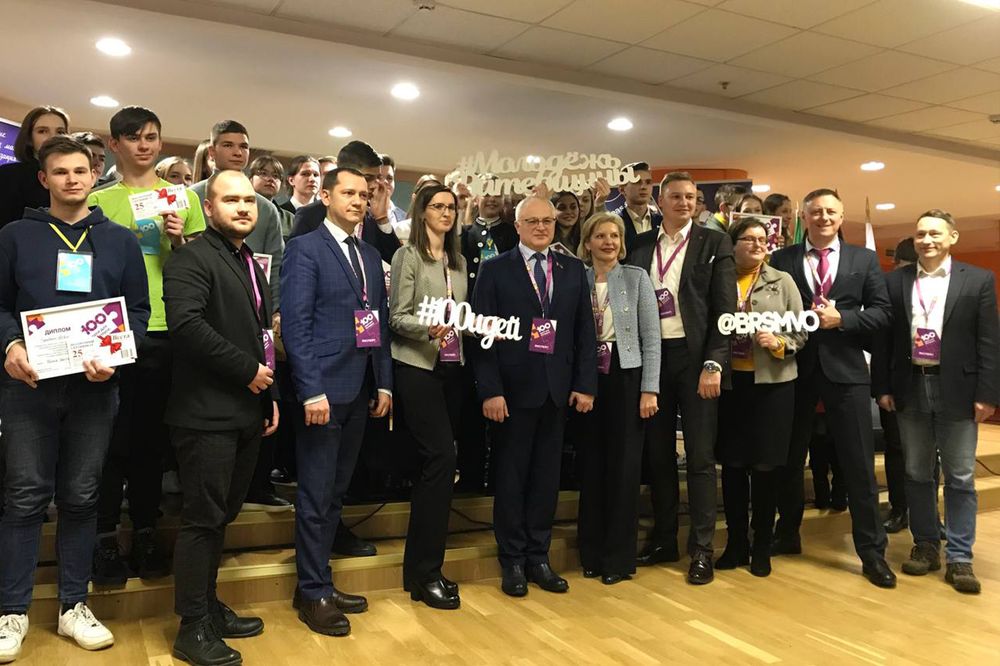
In December the regional round of the 11th season of the national youth innovation project "100 ideas for Belarus" took place in Orsha. The participants presented more than 50 youth innovative projects in various sectors. Among them Anton Polyakov, student of study group B119 of the Belarusian State Academy of Aviation.
Anton's attention was drawn to such ecological problem as invasive alien plants penetration into natural environment (from Latin invasio - "invasion, attack"). These plants pose a threat to biodiversity and human health.
Anton's innovative project presents a way of combating invasive plants by means of drones. The project makes it easier to control plants such as Sosnowsky's hogweed and Canadian goldenrod, the most widespread invasive plants in Belarus. Due to the relevance of the project, Anton Polyakov won the regional round of the 11th season of the national youth innovation project "100 ideas for Belarus" in the nomination: "Agroindustrial technologies and farming.

To find out more about the features of the development and the future plans of the aviation academy cadet, we talked to the winner.
– Anton, to begin with, tell us a little about your innovative project - how exactly do drones help in the fight against invasive weeds?
– There is a complex that ensures the autonomous operation of three drones. One of them creates a mission, i.e. it makes an orthophotomap of the area, analyses where the particular pockets of invasive weeds are located, i.e. goldenrod and hogweed. The two remaining drones are so-called spray drones. The spray liquid is poured into the drone and the areas affected by the infestation are automatically treated.
– How effective is this method - has it already been tested?
– Yes, it has already been tested in Tolochinsky, Sennensky, and Ushachsky districts of Vitebsk region. This type of control has shown good results. Despite the fact that the plants were already in a neglected state, that is, exceeded the rate of application of the preparation. We should say that the preparation is usually applied when the plant is not yet 30 cm long. (from 15 to 30 cm - then the effect is effective). But in our case the hogweed reached about three meters. But the solution proved to be quite effective - after two weeks the result was visible.
By the way, the Vitebsk region, where I come from, has a high concentration of hogweed compared to other regions of Belarus. About 70 per cent of the concentrations are found there.

– In your opinion, what are the advantages of introducing drones for fighting?
– Automation, simplicity and ease of operation. The staff can be reduced to just one person who monitors the operation - pours the preparation, monitors the battery charge, and so on. Drones spray in such a way that the droplets cover the entire surface of the plant - and the drug or solution is applied evenly. Drones that contain software will do a dangerous job for humans.
The sap of the hogweed contains substances that increase the body's sensitivity to sunlight. If an area of human skin is exposed to the sap of the hogweed, it can cause extremely painful burns if exposed to ultraviolet light. There have been cases where burns have resulted in the amputation of limbs and deaths...
– Tell us about the path from the idea to the implementation of your project.
– Let me start by saying that my parents are farmers. One day my father drove past a field where land was being cultivated using drones. He got interested and spoke to the man. It was a useful acquaintance.
In September this year, I decided to write a scientific paper related to drones. About their usefulness in agricultural processing. And in the process I got the idea in the context of fighting invasive plants.
The implementation was already taking place in cooperation with other organisations. I cooperate with Orsha Technopark, "Gorki" Technopark, and the subject of innovative activities of the Chinese-Belarusian Industrial Park "Great Stone". There, the development and production of a complex for applying crop protection products by means of drones is underway.

– Are you planning to go deeper into using drones for other problems or tasks in the future?
– This complex can be used not only for controlling infestations, but also for fertilising conventional crops. Generally speaking, it can be aimed at a very wide spectrum. The only limit is imagination. Trees, various plantations can be cultivated with the help of drones. Use it in precision farming: the drone that creates the mission is equipped with a multispectral camera that takes pictures in different spectra.
Multispectral imaging simultaneously produces several images of the same area in different areas of the electromagnetic spectrum. The different combinations of these images make it possible to detect processes and phenomena that are difficult or impossible to detect in an image taken in the visible spectrum.
Such imagery shows what plants lack, the vegetation index, readiness of the soil for sowing, and much more. Based on the information from the spectral areas, it is possible to carry out differentiated sowing and fertilising, i.e. in specific areas. It is simpler, more profitable and easier. I think that in addition to controlling infestations, I will be doing this.
Early next year Anton will present his project at the national stage of the competition "100 ideas for Belarus". We wish him creative success, further discoveries and victories!


